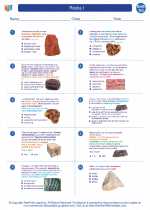Ferns: An Overview
Ferns are a group of vascular plants that reproduce via spores and do not produce seeds or flowers. They belong to the phylum Pteridophyta and are characterized by their large, divided leaves known as fronds. Ferns have a long evolutionary history, dating back to the Carboniferous period, and can be found in various habitats, from moist, shady forests to arid desert environments.
Basic Anatomy of Ferns
1. Fronds: The leaves of ferns are called fronds and are often highly divided, giving them a feathery appearance. 2. Rhizome: Ferns have underground stems called rhizomes, from which both roots and fronds emerge. 3. Sori: These are small, round structures found on the undersides of fronds, which contain clusters of sporangia. Sporangia are where spores are produced.
Life Cycle of Ferns
1. Spore Formation: Spores are produced in the sporangia located in the sori on the underside of fronds. 2. Germination: When conditions are suitable, spores germinate to form a tiny, heart-shaped structure called a prothallus. 3. Fertilization: The prothallus produces both male and female sex organs, and fertilization occurs on the prothallus. 4. Embryo Development: After fertilization, a new fern plant begins to grow from the fertilized egg, eventually developing into a mature fern.
Ecological Importance of Ferns
Ferns play a crucial role in various ecosystems, serving as food sources for herbivores, contributing to soil stabilization, and influencing water and nutrient cycles. Additionally, some fern species are used in traditional medicine and horticulture.
Study Guide
1. What are the defining characteristics of ferns? 2. Describe the life cycle of ferns, including spore formation and fertilization. 3. How do ferns contribute to ecological balance in their respective habitats? 4. Name and describe three different types of ferns and their preferred habitats. 5. Discuss the significance of ferns in human culture, including any practical or cultural uses.
[Ferns] Related Worksheets and Study Guides:
.◂Earth Science Worksheets and Study Guides High School. Rocks I

 Worksheet/Answer key
Worksheet/Answer key
 Worksheet/Answer key
Worksheet/Answer key
 Vocabulary/Answer key
Vocabulary/Answer key
 Vocabulary/Answer key
Vocabulary/Answer key
 Vocabulary/Answer key
Vocabulary/Answer key
